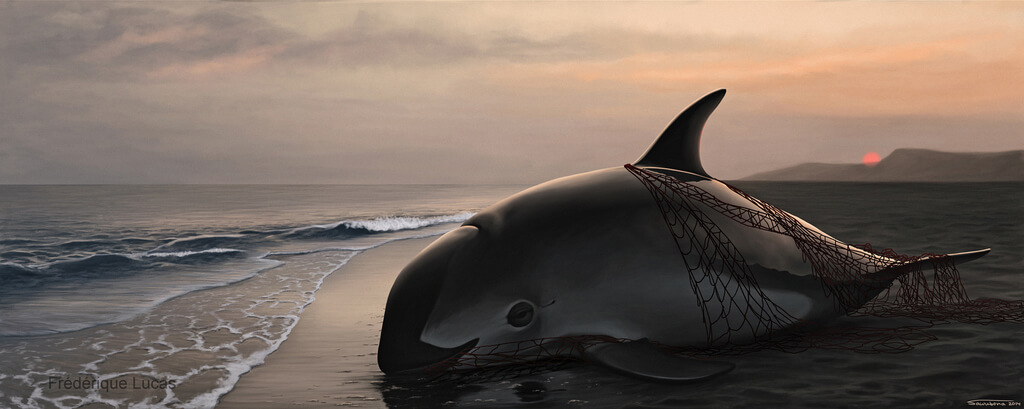On September 26, 2018, scientists aboard the Narval spotted a pair of vaquitas: one of the individuals was much smaller in size and was swimming within one body length of the other. It was a calf! The team photographed the adult and the calf, and identified the adult to be the possible mother of the calf that was captured and released during the 2017 VaquitaCPR operation. This indicates that the remaining vaquitas are healthy and are capable of reproducing successfully despite a small genetic pool. It also shows that vaquitas can reproduce once a year instead of once every two years, as previously thought. Latest acoustic data implies that the remaining vaquitas are staying in a relatively small area, which will allow scientists to photograph and identify the individuals, and attempt to protect them effectively. During the Narval expedition, additional adults and a calf were also spotted giving this endemic, critically endangered population a new ray of hope. However, totoaba fishery season is starting in December.
According to the latest censuses, about 30 vaquitas remain and it is estimated that about that many die each year in fishing nets. Since 2011, the population has plummeted by 90% due to gillnet fishing. A gillnet is a rectangular, vertically deployed panel that traps fish by catching them in the mesh by the gills; an effective means of harvesting fish, but also responsible for a large number of incidental catches.
The vaquita lives exclusively in the northern reaches of the Gulf of California, which is part of the Islands and Protected Areas of the Gulf of California, a UNESCO World Heritage Site. According to UNESCO, this site “contains 39% of the world’s total number of species of marine mammals and a third of the world’s marine cetacean species”. There are also some 900 species of fish and fishing plays an important role in the local economy. However, according to the WWF report, illegal and unsustainable fishing practices and growing urbanization and pollution are harming the exceptional universal value of the site and undermining its ability to nurture and sustain local communities economically.
In 2015, to protect species at risk, the Mexican government banned the use of gillnets for two years; this ban expires on May 31, 2017. The WWF is calling on the Mexican government to permanently outlaw gillnets and encourage the adoption of fishing gear that is safer for cetaceans. WWF is encouraging the World Heritage Committee to undertake measures to place the Gulf of California on the List of World Heritage in Danger if the Mexican government does not take the necessary steps to protect the vaquita.
WWF is also calling on the Chinese and US governments to work with their Mexican counterpart to put an end to the illegal harvesting and trade of totoaba and reduce consumer demand for this fish. The totoaba, a large silver fish endemic to the Gulf of California, shares its range with the vaquita. As the swim bladder of this fish is marketed at high prices in China, overfishing and intensive poaching have brought this fish – and at the same time the vaquita, which is also caught in gillnets – to the endangered species list. WWF is calling on CITES to implement sanctions if certain countries fail to demonstrate adequate progress in curbing the totoaba trade.
An outright ban of all fishing in this area is not a solution, however, as locals depend on this activity to eek out a living. To ensure the long-term protection of the vaquita, its exceptional marine habitat and the livelihoods of local residents, the Mexican government and NGOs will need to work with local communities to encourage more sustainable fishing practices and develop other sources of income. Time is running out to find effective, equitable and sustainable solutions to protect this endangered cetacean.
Last update: October 31, 2018





